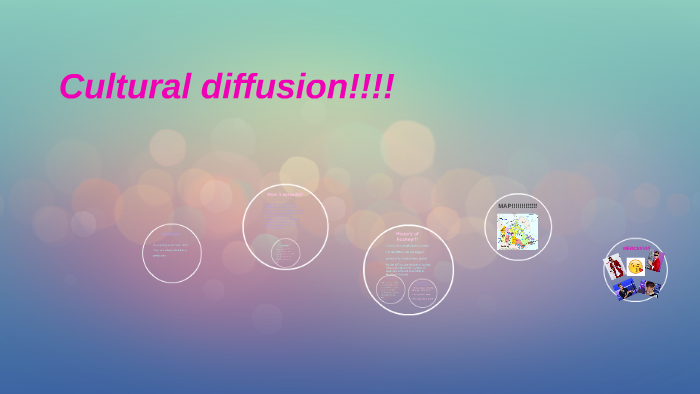Cultural diffusion is a fascinating phenomenon that reflects the interconnectedness of human societies, and in its most basic definition, it refers to the process by which cultural elements, such as ideas, practices, values, and artifacts, are transmitted from one society to another. This transmission can occur through various channels, including migration, trade, media, and social interaction. While cultural diffusion enriches societies and fosters diversity, it also poses interesting challenges and questions about identity and authenticity.
At its core, cultural diffusion is often illustrated through visual representations, including cartoons. These playful depictions lend an engaging medium to explore complex concepts. Imagine a cartoon where characters from different cultures mingle at a global festival, exchanging their traditional foods, dancing styles, and musical instruments. This representation exemplifies cultural diffusion in a delightful yet informative manner, enabling viewers to grasp the essence of these exchanges without the need for heavy textual explanations.
One of the pivotal aspects of cultural diffusion is its historical context. Throughout history, we see examples of cultural diffusion playing a significant role in shaping civilizations. The ancient Silk Road is a prime example, acting as a conduit for not only trade but also ideas, technologies, and religions. Caravans of merchants, scientifically oriented scholars, and wandering monks traversed this route, facilitating an interactive tapestry of cultural exchange. As a result, innovations such as paper, gunpowder, and even the compass traversed borders, transforming societies en route. The process is intricate, yet it demonstrates that cultural diffusion is not merely an abstract concept; it has tangible outcomes that echo through history.
In contemporary society, cultural diffusion has been accelerated by globalization. Information spreads at an unprecedented rate through digital channels, allowing for instant connectivity among disparate cultures. Social media platforms serve as contemporary stages for the sharing of memes, fashion trends, culinary recipes, and artistic expressions. For instance, the fusion of culinary practices has led to the rise of dishes such as sushi burritos and Korean tacos. This melding of flavors and techniques raises the question: what happens to traditional cuisines when they are adapted and redefined through the lens of cultural diffusion? Do we risk diluting their essence?
On a more serious note, the rapid pace of cultural diffusion today presents challenges. As cultures intermingle, there exists a tension between celebration and appropriation. Cultural appropriation refers to the adoption of elements from one culture by members of another culture, often without understanding or respect for the original context. This issue is particularly prominent in the fashion and music industries, where cultural symbols are commodified and stripped of their foundational meanings. The mischievous cartoon character can serve as a metaphor here, playfully donning a headdress at a festival—while evoking joy, it also ignites discussions about respect and the fine line between appreciation and appropriation.
The enchanting realms of art and literature showcase cultural diffusion as well. Artists and writers often draw inspiration from various cultures, creating pieces that reflect the cross-pollination of ideas and styles. Consider the brilliant works of Picasso, who was influenced by African art, or the novels of multiracial writers who blend their heritage into narrative structures. Their creativity illustrates how cultural diffusion fosters innovation and cross-cultural dialogues. However, this leads us to ponder: at what point does inspiration become imitation? How can creators ensure that they respect the sources of their inspiration while striving for originality?
The notion of cultural diffusion also intersects with the concept of cultural identity. As societies become increasingly multicultural, individuals may find themselves navigating multiple cultural identities, leading to complex intersections of self-perception and societal expectations. These multifaceted identities often result in enriching experiences, yet they may also engender confusion or conflict as individuals grapple with differing societal norms and values. In this whimsical exploration, one might visualize a cartoon character switching outfits that represent their varied cultural backgrounds—an external manifestation of an internal journey, emphasizing the fluidity of identity in our increasingly globalized world.
The potential challenges that accompany cultural diffusion raise essential questions: How do we honor the origins of cultural elements while embracing new iterations? How can we cultivate a consciousness that fosters empathy and understanding in a world that is both diverse and interconnected? To move beyond mere awareness, society must adopt strategies that promote inclusivity and respect for all cultures. Educational initiatives, community dialogues, and collaborative artistic endeavors can facilitate these discussions, ensuring that cultural exchange does not become a superficial performance but rather a meaningful engagement.
In conclusion, cultural diffusion is an intricate tapestry woven from the threads of history, globalization, creativity, and identity. It opens up new horizons while simultaneously presenting challenges that demand careful consideration. By engaging with these concepts through playful mediums, such as cartoons, we not only demystify complex ideas but also stimulate critical conversations about the future of our shared cultural landscape. As we navigate this journey of cultural exchange, we must remain mindful stewards, cultivating a world defined not by division but by celebration, mutual respect, and understanding of our rich, diverse heritages.
